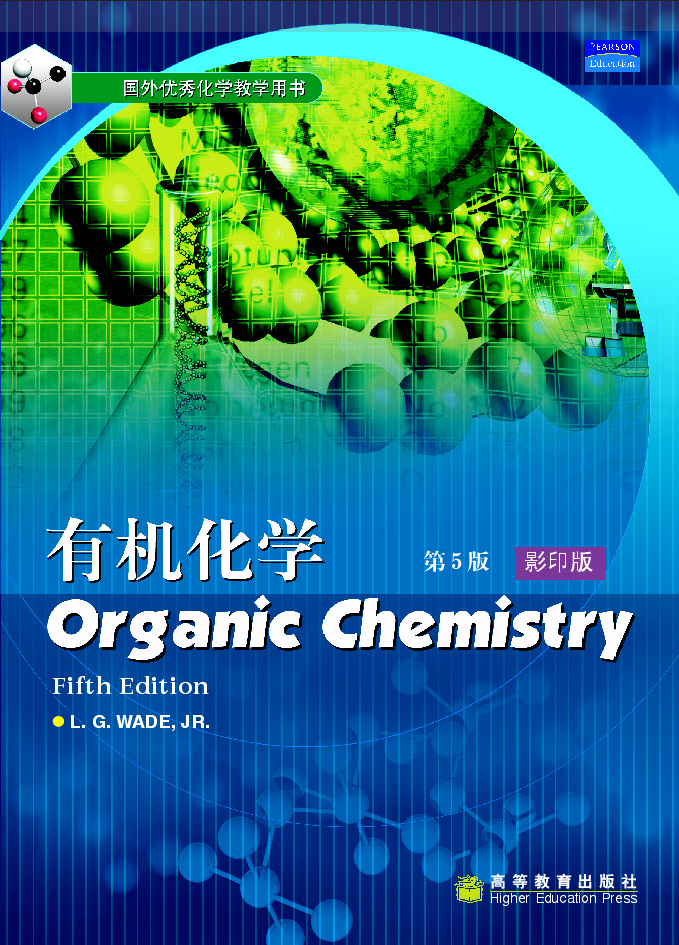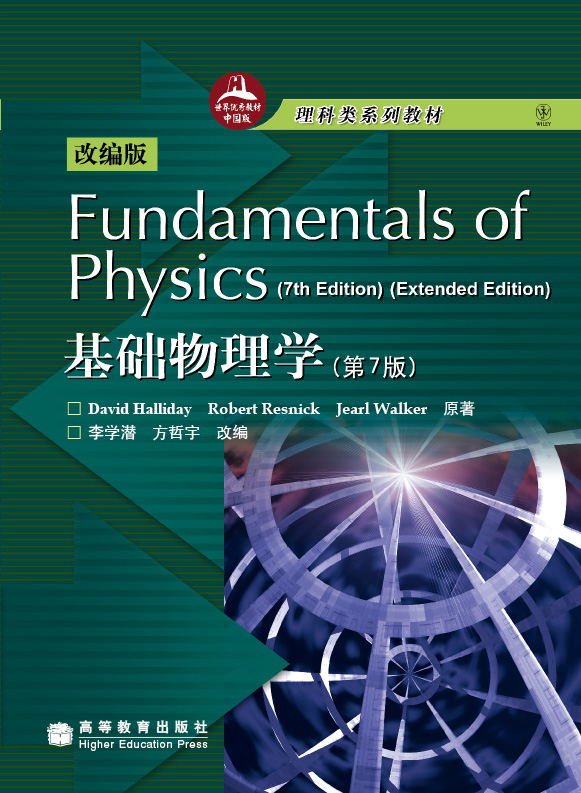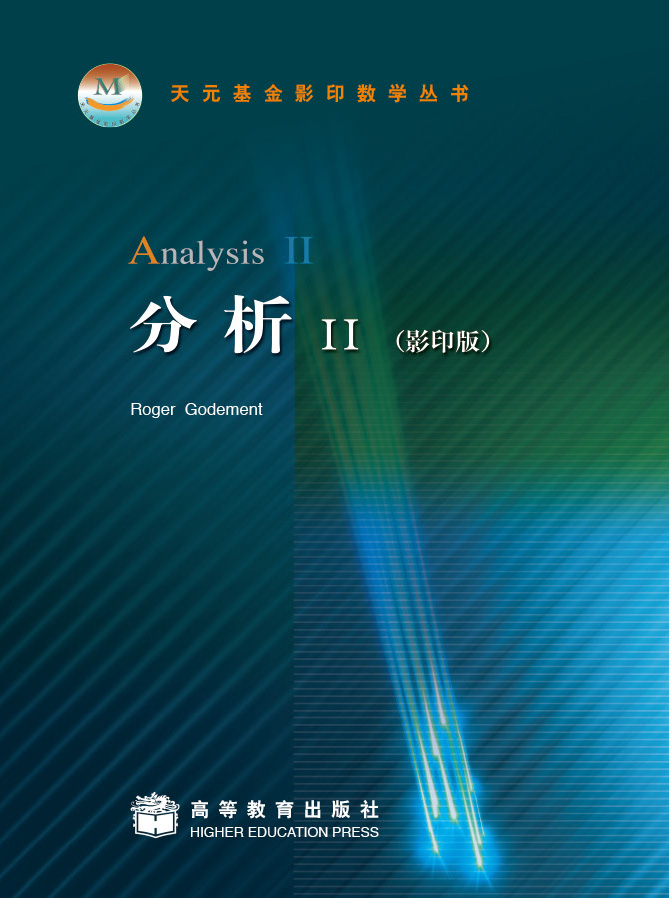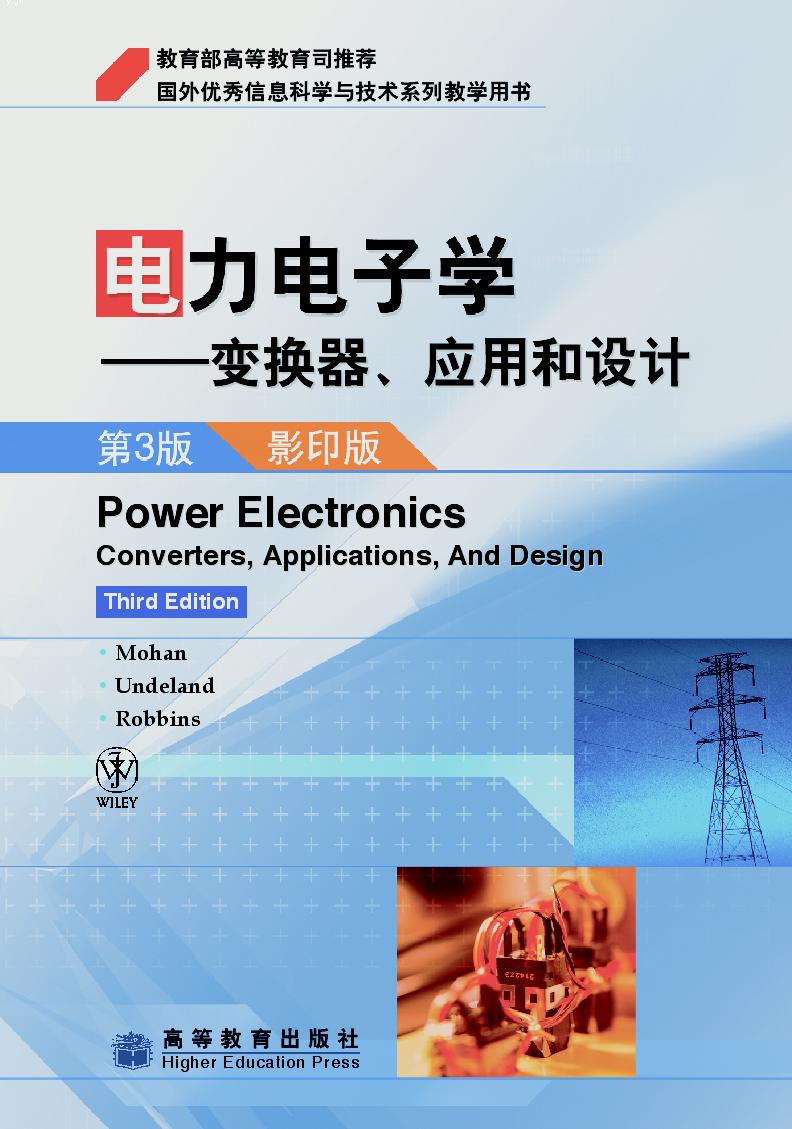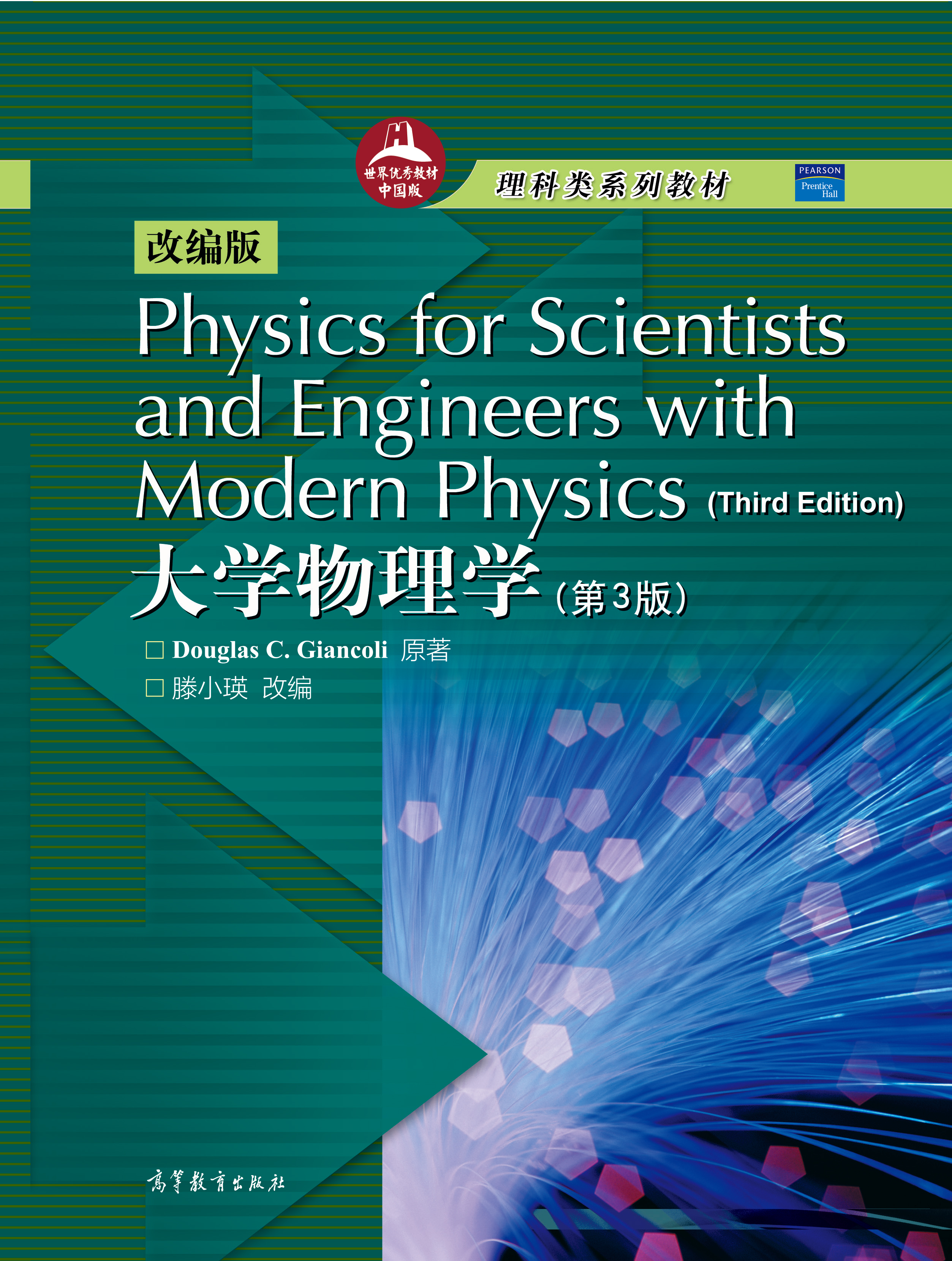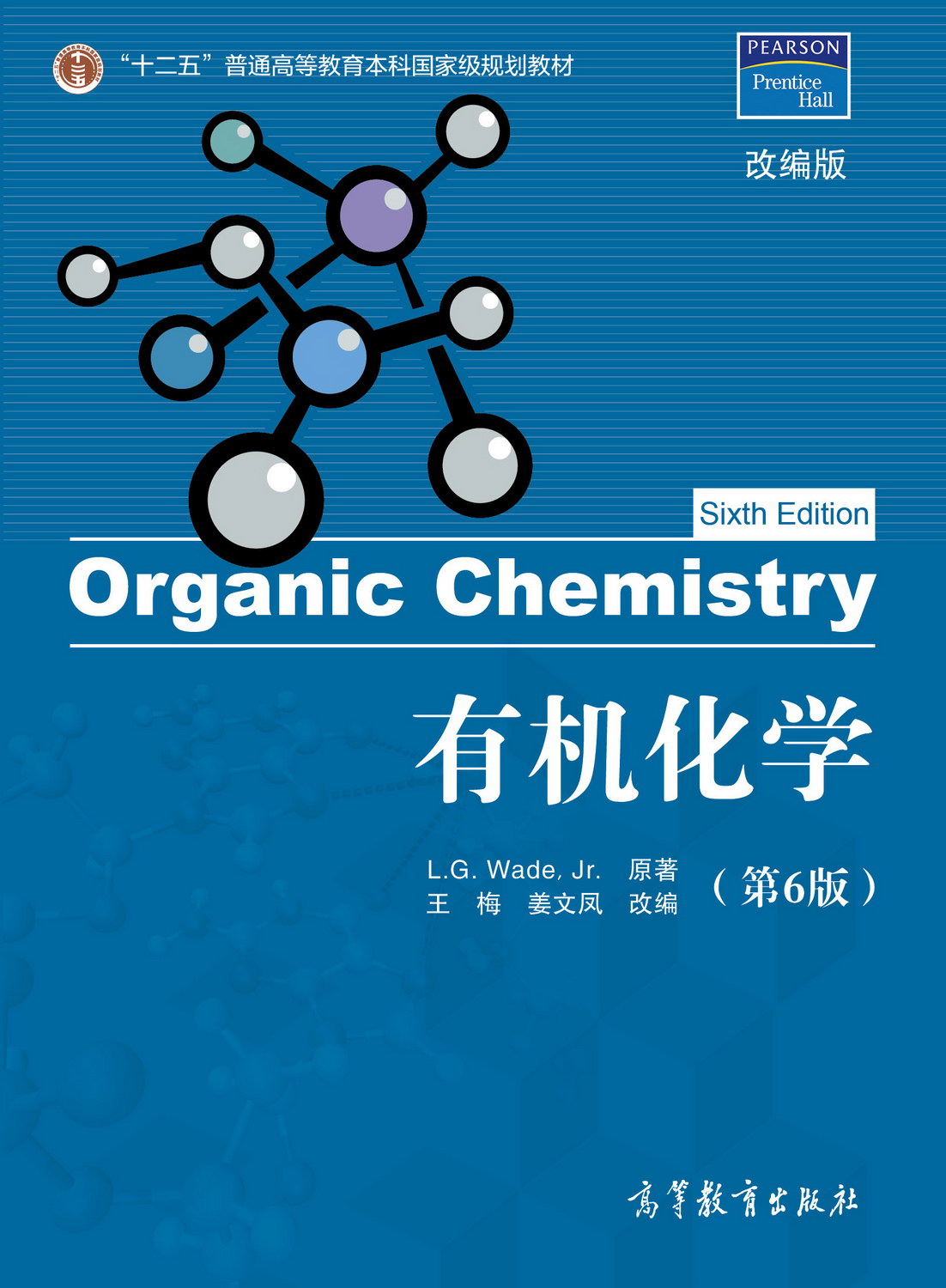有机化学(第5版)(影印版)
作者: L.G.Wade,JR.
出版时间:2004-03-25
出版社:高等教育出版社
- 高等教育出版社
- 9787040144581
- 1
- 249242
- 平装
- 16开
- 2004-03-25
- 2700
- 1220
Preface xxii
1 Introduction and Review
2 Structure and Properties of Organic Molecules
3 Structure and Stereochemistry of Alkanes
4 The Study of Chemical Reactions
5 Stereochemistry
6 Alkyl Halides: Nucleophilic Substitution and Elimination
7 Structure and Synthesis of Alkenes
8 Reactions of Alkenes
9 Alkynes
10 Structure and Synthesis of Alcohols
11 Reactions of Alcohols
12 Infrared Spectroscopy and Mass Spectrometry
13 Nuclear Magnetic Resonance Spectroscopy
14 Ethers, Epoxides, and Sulfides
15 Conjugated Systems, Orbital Symmetry, and Ultraviolet Spectroscopy
16 Aromatic Compounds
17 Reactions of Aromatic Compounds
18 Ketones and Aldehydes
19 Amines
20 Carboxylic Acids
21 Carboxylic Acid Derivatives
22 Alpha Substitutions and Condensations of Enols and Enolate Ions
23 Carbohydrates and Nucleic Acids
24 Amino Acids, Peptides, and Proteins
25 Lipids
26 Synthetic Polymers
Appendices
Answers to Selected Problems
Photo Credits PC1
IndexI1
Preface xxii
About the Author xxxviii
Chapter 1
Introduction and Review
1-1 The Origins of Organic Chemistry
1-2 Principles of Atomic Structure
1-3 Bond Formation: The Octet Rule
I-4 Lewis Structures
1-5 Multiple Bonding
Summary: Common Bonding Patterns (Uncharged)
1-6 Electronegativity and Bond Polarity
1-7 Formal Charges
1-8 Ionic Structures
Summary: Common Bonding Patterns in Organic Compounds and Ions
1-9 Resonance
1-10 Structural Formulas
1-11 Molecular Formulas and Empirical Formulas
1-12 Arrhenius Acids and Bases
1-13 Brφnsted-Lowry Acids and Bases
1-14 Lewis Acids and Bases
Chapter 1 Glossary
Study Problems
Chapter 2
Structure and Properties of Organic Molecules
2-1 Wave Properties of Electrons in Orbitals
2-2 Molecular Orbitals
2-3 PiBonding
2-4 Hybridization and Molecular Shapes
2-5 Drawing Three-Dimensional Molecules
2-6 General Rules of Hybridization and Geometry
2-7 Bond Rotation
2-8 Isomerism
2-9 Polarity of Bonds and Molecules
2-10 Intermolecular Attractions and Repulsions
2-11 Polarity Effects on Solubilities
2-12 Hydrocarbons
2-13 Organic Compounds Containing Oxygen
2-14 Organic Compounds Containing Nitrogen
Chapter 2 Glossary
Study Problems
Chapter 3
Structure and Stereochemistry of Alkanes
3-1 Classification of Hydrocarbons (Review)
3-2 Molecular Formulas of Alkanes
3-3 Nomenclature of Alkanes Summary: Rules for Naming Alkanes
3-4 Physical Properties of Alkanes
3-5 Uses and Sources of Alkanes
3-6 Reactions of Alkanes
3-7 Structure and Conformations of Alkanes
3-8 Conformations of Butane
3-9 Conformations of Higher Alkanes
3-10 Cycloalkanes
3-11 cis-trans Isomerism in Cycloalkanes
3-12 Stabilities of Cycloalkanes; Ring Strain
3-13 Cyclohexane Conformations Problem-Solving Strategy: Drawing Chair Conformations
3-14 Conformations of Monosubstttuted Cyclohexanes
3-15 Conformations of Disubstituted Cyclohexanes Problem-Solving Strategy: Recognizing cis and trans Isomers
3-16 Bicyclic Molecules Chapter 3 Glossary Study Problems
Chapter 4
The Study of Chemical Reactions
4-1 Introduction
4-2 Chlorination of Methane
4-3 The Free-Radical Chain Reaction
KEY MECHANISM: Free-Radical Halogenation
4-4 Equilibrium Constants and Free Energy
4-5 Enthalpy and Entropy
4-6 Bond-Dissociation Energies
4-7 Enthalpy Changes in Chlorination
4-8 Kinetics and the Rate Equation
4-9 Activation Energy and the Temperature Dependence of Rates
4-10 Transition States
4-11 Rates of Multistep Reactions
4-12 Temperature Dependence of Halogenation
4-13 Halogenation of Higher Alkanes
4-14 The Hammond Postulate
Problem-Solving Strategy: Proposing Reaction Mechanisms
4-15 Radical Inhibitors
4-16 Reactive Intermediates
Summary: Reactive Intermediates
Chapter 4 Glossary
Study Problems
Chapter 5
Stereochemistry
5-1 Introduction
5-2 Chirality
5-3 (R) and (S) Nomenclature of Asymmetric Carbon Atoms
5-4 Optical Activity
5-5 Biological Discrimination of Enantiomers
5-6 Racemic Mixtures
5-7 Enantiomeric Excess and Optical Purity
5-8 Chirality of Conformationally Mobile Systems
5-9 Chiral Compounds without Asymmetric Atoms
5-10 Fischer Projections
Summary: Fischer Projections and Their Use
5-11 Diastereomers
Summary:Types of Isomers
5-12 Stereochemistry of Molecules with Two or More Asymmetric Carbons
5-13 Meso Compounds
5-14 Absolute and Relative Configuration
5-15 Physical Properties of Diastereomers
5-16 Resolution of Enantiomers
Chapter 5 Glossary
Study Problems
Chapter 6
Alkyl Halides: Nucleophilic Substitution and Elimination
6-1 Introduction
6-2 Nomenclature of Alkyl Halides
6-3 Common Uses of Alkyl Halides
6-4 Structure of Alkyl Halides
6-5 Physical Properties of Alkyl Halides
6-6 Preparation of Alkyl Halides
Summary: Methods for Preparing Alkyl Halides
6-7 Reactions of Alkyl Halides: Substitution and Elimination
6-8 Second-Order Nucleophilic Substitution: The SN2 Reaction
KEY MECHANISM: The SN2 Reaction
6-9 Generality of the SN2 Reaction
Summary: SN2 Reactions of Alkyl Halides
6-10 Factors Affecting SN2 Reactions: Strength of the Nucleophile
Summary: Trends in Nucleophilicity
6-11 Reactivity of the Substrate in SN2 Reactions
6-12 Stereochemistry of the SN2 Reaction
6-13 First-Order Nucleophilic Substitution: The SN1 Reaction
KEY MECHANISM: The SO Reaction
6-14 Stereochemistry of the SN1 Reaction
6-15 Rearrangements in SN1 Reactions
6-16 Comparison of SNI and SN2 Reactions
Summary: Nucleophilic Substitutions
6-17 First-Order Elimination: The El Reaction
KEY MECHANISM: The E1 Reaction
Summary: Carbocation Reactions
6-18 Second-Order Elimination: The E2 Reaction
KEY MECHANISM: The E2 Reaction
6-19 Positional Orientation of Elimination: The Saytzeff Rule
6-20 Stereochemistry of the E2 Reaction
6-21 Comparison of E1 and E2 Elimination Mechanisms
Summary: Elimination Reactions
Problem-Solving Strategy: Predicting Substitutions and Eliminations
Summary: Reactions of Alkyl Halides
Chapter 6 Glossary
Study Problems
Chapter 7
Structure and Synthesis of Alkenes
7-1 Introduction
7-2 The Orbital Description of the Alkene Double Bond
7.3Elements of Unsaturauon
7-4 Nomenctature of Alkenes
7-5 Nomenctature of Cis-trans Isomers
Summary: Ruies for Naming Alkenes
7-6 Commercial Importance of Alkenes
7-7 Stability of ACKenes
7-8Physical Properties of Alkenes
7-9 Alkene Synthesis by Elimination of Alkyl Halides
7-10 Alkene Synthesis by Dehydration of Alcohols
KEY MECHANISM: Acid-Catalyzed Dehydration of an Alcohol
7-11 Alkene Syntnesis by High-Temperature Industrial Methods
Problem-Solving Strategy: Proposing Reaction Mechanisms
Summary: Methods for Synthesis of Alkenes
Chapter 7 Glossary
Study Problems
Chapter 8
Reactions of Alkenes
8-1 Reactivity of the Carbon-Carbon Double Bond
8-2 Electrophilic Addition to Alkenes
KEY MECHANISM: Electrophilic Addition to Alkenes
8-3 Addition of Hydrogen Halides to Alkenes
8-4 Addition of Water: Hydration of Alkenes
8-5 Hydration by Oxymercuration-Demercuration
8-6 Alkoxymercuration-Demercuration
8-7 Hydroboration of Alkenes
8-8 Catalytic Hydrogenation of Alkenes
8-9 Addition of Carbenes to Alkenes
8-10 Addition of Halogens to Alkenes
8-11 Formation of Halohydrins
8-12 Epoxidation of Alkenes
8-13 Acid-Catalyzed Opening of Epoxides
8-14 Syn Hydroxylation of Alkenes
8-15 Oxidative Cleavage of Alkenes
8-16 Polymerization of Alkenes
Problem-Solving Strategy: Organic Synthesis
Summary: Reactions of Alkenes
Chapter 8 Glossary
Study Problems
Chapter 9
Alkynes
9-1 Introduction
9-2 Nomenclature of Alkynes
9-3 Physical Properties of Alkynes
9-4 Commercial Importance of Alkynes
9-5 Electronic Structure of Alkynes
9-6 Acidity of Alkynes
9-7 Synthesis of Alkynes from Acetylides
9-8 Synthesis of Alkynes by Elimination Reactions
Summary: Syntheses of Alkynes
9-9 Addition Reactions of Alkynes
9-10 Oxidation of Alkynes
Problem-Solving Strategy: Multistep Synthesis
Summary: Reactions of Alkynes
Chapter 9 Glossary
Study Problems
Chapter 10
Structure and Synthesis of Alcohols
10-1 Introduction
10-2 Structure and Classification of Alcohols
10-3 Nomenclature of Alcohols and Phenols
10-4 Physical Properties of Alcohols
10-5 Commercially Important Alcohols
10-6 Acidity of Alcohols and Phenols
10-7 Synthesis of Alcohols: Introduction and Review
Summary: Previous Alcohol Syntheses
10-8 Organometallic Reagents for Alcohol Synthesis
10-9 Addition of Organometallic Reagents to Carbonyl Compounds
KEY MECHANISM: Grignard Reactions
Summary: Grignard Reactions
10-10 Side Reactions of Organometallic Reagents: Reduction of Alkyl Halides
10-11 Reduction of the Carbonyl Group: Synthesis of 1°and 2°Alcohols
Summary: Reactions of LiAIH4 and NaBH4
Summary: Alcohol Syntheses
10-12 Thiols (Mercaptans)
Chapter 10 Glossary
Study Problems
Chapter 11
Reactions of Alcohols
11-1 Oxidation States of Alcohols and Related Functional Groups
11-2 Oxidation of Alcohols
11-3 Additional Methods for Oxidizing Alcohols
1l-4 Biological Oxidation of Alcohols
11-5 Alcohols as Nucleophiles and Electrophiles; Formation of iosyiates
Summary: SN2 Reactions of Tosylate Esters
11-6 Reduction of Alcohols
11-7 Reactions of Alcohols with Hydrohalic Acids
11-8 Reactions of Alcohols with Phosphorus Halides
11-9 Reactions of Alcohols with Thionyl Chloride
11-10 Dehydration Reactions of Alcohols
Problem-Solving Strategy: Proposing Reaction Mechanisms
11-11 Unique Reactions of Diols
11-12 Esterification of Alcohols
11-13 Esters of Inorganic Acids
11-14 Reactions of Alkoxides
KEY MECHANISM: The Williamson Ether Synthesis
Problem-Solving Strategy: Multistep Synthesis
Summary: Reactions of Alcohols
Chapter 11 Glossary
Study Problems
Chapter 12
Infrared Spectroscopy and mass Spectrometry
12-1 Introduction
12-2 The Electromagnetic Spectrum
12-3 The Infrared Region
12-4 Molecular Vibrations
12-5 IR-Active and IR-Inactive Vibrations
12-6 Measurement of the IR Spectrum
12-7 Infrared Spectroscopy of Hydrocarbons
12-8 Characteristic Absorptions of Alcohols and Amines
12-9 Characteristic Absorptions of Carbonyl Compounds
12-10 Characteristic Absorptions of C—N Bonds
12-11 Simplified Summary of IR Stretching Frequencies
12-12 Reading and Interpreting IR Spectra (Solved Problems)
12-13 Introduction to Mass Spectrometry
12-14 Determination of the Molecular Formula by Mass Spectrometry
12-15 Fragmentation Patterns in Mass Spectrometry
Summary: Common Fragmentation Patterns
Chapter 12 Glossary
Study Problems
Chapter 13
Nuclear Magnetic Resonance Spectroscopy
13-1 Introduction
13-2 Theory of Nuclear Magnetic Resonance
13-3 Magnetic Shielding by Electrons
13-4 The NMR Spectrometer
13-5 The Chemical Shift
13-6 The Number of Signals
13-7 Areas of the Peaks
13-8 Spin-Spin Splitting
Problem-Solving Strategy: Drawing an NMR Spectrum
13-9 Complex Splitting
13-10 Stereochemical Nonequivalence of Protons
13-11 Time Dependence of NMR Spectroscopy
Problem-Solving Strategy: Interpreting Proton NMR Spectra
13-12 Carbon-13 NMR Spectroscopy
13-13 Interpreting Carbon NMR Spectra
13-14 Nuclear Magnetic Resonance Imaging
Problem-Solving Strategy: Spectroscopy Problems
Chapter 13 Glossary
Study Problems
Chapter 14
Ethers, Epoxides, and Sulfides
14-1 Introduction
14-2 Physical Properties of Ethers
14-3 Nomenclature of Ethers
14-4 Spectroscopy of Ethers
14-5 The Williamson Ether Synthesis
14-6 Synthesis of Ethers by Alkoxymercuration-Demercuration
14-7 Industrial Synthesis: Bimolecular Dehydration of Alcohols
Summary: Syntheses of Ethers
14-8 Cleavage of Ethers by HBr and HI
14-9 Autoxidation of Ethers
Summary: Reactions of Ethers
14-10 Sulfides (Thioethers)
14-11 Synthesis of Epoxides
Summary: Epoxide Syntheses
14-12 Acid-Catalyzed Ring Opening of Epoxides
14-13 Base-Catalyzed Ring Opening of Epoxides
14-14 Orientation of Epoxide Ring Opening
14-15 Reactions of Epoxides with Grignard and Organolithium Reagents
14-16 Epoxy Resins: The Advent of Modern Glues
Summary: Reactions of Epoxides
Chapter 14 Glossary
Study Problems
Chapter 15
Conjugated Systems, Orbital Symmetry,and Ultraviolet Spectroscopy
15-1 Introduction
15-2 Stabilities of Dienes
15-3 Molecular Orbital Picture of a Conjugated System
15-4 Allylic Cations
15-5 1,2-and 1,4-Addition to Conjugated Dienes
15-6 Kinetic versus Thermodynamic Control in the Addition of HBr to 1,3-Butadiene
15-7 Allylic Radicals
15-8 Molecular Orbitals of the Allylic System
15-9 Electronic Configurations of the Allyl Radical, Cation, and Anion
15-10 SN2 Displacement Reactions of Allylic Halides and Tosylates
15-11 The Diels-Alder Reaction
KEY MECHANISM: The Diels-Alder Reaction
15-12 The Diels-Alder as an Example of a Pericyclic Reaction
15-13 Ultraviolet Absorption Spectroscopy
Chapter 15 Glossary
Study Problems
Chapter 16
Aromatic Compounds
16-1 Introduction: The Discovery of Benzene
16-2 The Structure and Properties of Benzene
16-3 The Molecular Orbitals of Benzene
16-4 The Molecular Orbital Picture of Cyclobutadiene
16-5 Aromatic, Antiaromatic, and Nonaromatic Compounds
16-6 Hǖckel’s Rule
16-7 Molecular Orbital Derivation of Hǖckel’s Rule
16-8 Aromatic Ions
16-9 Heterocyclic Aromatic Compounds
16-10 Polynuclear Aromatic Hydrocarbons
16-11 Aromatic Allotropes of Carbon
16-12 Fused Heterocyclic Compounds
16-13 Nomenclature of Benzene Derivatives
16-14 Physical Properties of Benzene and Its Derivatives
16-15 Spectroscopy of Aromatic Compounds
Chapter 16 Glossary
Study Problems
Chapter 17
Reactions of Aromatic Compounds
17-1 ElectroDhilicAromatic Substitution
KEY MECHANISM: Electrophilic Aromatic 5utistitutlon
17-2 Halogenation of Benzene
17-3 Nitration of Benzene
17-4 Sulfonation of Benzene
17-5 Nitration of Toluene: The Effect of Alky1 Substitution
17-6 Activating, Ortho, Para-Directing Substituents
Summary: Activating, Ortho, Para-Directors
17-7 Deactivating, Meta-Directing Substituents
Summary: Deactivatine, Meta-Directors
17-8 Halogen Substituents: Deactivating, but Ortho, Para-Directing
Summary: Directnp Effects of Substituents
17-9 Effects of Multiple Substituents on Electrophthc Aromatic Sutistituaon
17-10 The Friedel-Crafts Alkylation
17-11 The Friedel-Crafts Acylation
Summary: Comparison of Friedel-Crafts Alkylation and Acylation
17-12 Nucleophilic Aromatic Substitution
17-13 Addition Reactions of Benzene Denvatives
17-14 Side-Chain Reactions of Benzene Derivatives
17-15 Reactions of Phenols
Summary: Reactions of Aromatic Compounds
Chapter 17 Glossary
Studv Problems
Chapter 18
Ketones and Aldehydes
18-1 Carbonyl Compounds
18-2 Structure of the Carbonyl Group
18-3 Nomenclature of Ketones and Aldehydes
18-4 Physical Properties of Ketones and Aldehydes
18-5 Spectroscopy of Ketones and Aldehydes
18-6 Industrial Importance of Ketones and Aldehydes
18-7 Review of Syntheses of Ketones and Aldehydes
18-8 Synthesis of Ketones and Aldehydes Using 1,3-Dithianes
18-9 Synthesis of Ketones from Carboxylic Acids
18-10 Synthesis of Ketones from Nitriles
18-11 Synthesis of Aldehydes and Ketones from Acid Chlorides
Summary: Syntheses of Ketones and Aldehydes
18-12 Reactions of Ketones and Aldehydes: Nucleophilic Addition
KEY MECHANISM: Nucleophilic Additions to Carbonyl Groups
18-13 The Wittig Reaction
18-14 Hydration of Ketones and Aldehydes
18-15 Formation of Cyanohydrins
18-16 Formation of Imines
KEY MECHANISM: Formation of Imines
18-17 Condensations with Hydroxylamine and Hydrazines
Summary: Condensations of Amines with Ketones and Aldehydes
18-18 Formation of Acetals
KEY MECHANISM: Formation of Acetals
Problem-Solving Strategy: Proposing Reaction Mechanisms
18-19 Use of Acetals as Protecting Groups
18-20 Oxidation of Aldehydes
18-21 Other Reductions of Ketones and Aldehydes
Summary: Reactions of Ketones and Aldehydes
Chapter 18 Glossary
Study Problems
Chapter 19
Amines
19-1 Introduction
19-2 Nomenclature of Amines
19-3 Structure of Amines
19-4 Physical Properties of Amines
19-5 Basicity of Amines
19-6 Effects on Amine Basicity
19-7 Salts of Amines
19-8 Amine Salts as Phase-Transfer Catalysts
19-9 Spectroscopy of Amines
19-10 Reactions of Amines with Ketones and Aldehydes (Review)
19-11 Aromatic Substitution of Arylamines and Pyridine (Review)
19-12 Alkylation of Amines by Alkyl Halides
19-13 Acylation of Amines by Acid Chlorides
19-14 Formation of Sulfonamides
19-15 Amines as Leaving Groups: The Hofmann Elimination
19-16 Oxidation of Amines; The Cope Elimination
19-17 Reactions of Amines with Nitrous Acid
19-18 Reactions of Arenediazonium Salts
Summary: Reactions of Amines
19-19 Synthesis of Amines
Summary: Synthesis of Amines
Chapter 19 Glossary
Study Problems
Chapter 20
Carboxylic Acids
20-1 Introduction
20-2 Nomenclature of Carboxy11c Acias
20-3 Structure and Physical Properties of Uarboxy11c AC1as
20-4 Acidity of Carboxylic Acids
20-5 Salts of Carboxylic Acids
20-6 Commercial Sources of Carboxylic Acids
20-7 Spectroscopy of Carboxylic Acids
20-8 Synthesis of Carboxylic Acids
Summary: Syntheses of Carboxylic Acids
20-9 Reactions of Carboxylic Acids and Derivatives; Nucleophilic Acyl Substitution
20-10 Condensation of Acids with Alcohols: The Fischer Esterification
KEY MECHANISM: Fischer Esterification
20-11 Synthesis and Use of Acid Chlorides
20-12 Esterification Using Diazomethane
20-13 Condensation of Acids with Amines: Direct Synthesis of Amides
20-14 Reduction of Carboxylic Acids
20-15 Alkylation of Carboxylic Acids to Form Ketones
Summary: Reactions of Carboxylic Acids
Chapter 20 Glossary
Study Problems
Chapter 21
Carboxylic Acid Derivatives
21-1 Introduction
21-2 Structure and Nomenclature of Acid Derivatives
21-3 Physical Properties of Carboxylic Acid Derivatives
21-4 Snectroscoov of Carboxylic Acid Derivatives
21-5 Interconversion of Acid Derivatives by Nucleophilic Acyl Substitution
KEY MECHANISM: Addition-Elimination Mechanism of Nucleophilic Acyl
substitution
21-6 Acid-Catalyzed Nucleophilic Acyl Substitution
Problem-Solving Strategy: Proposing Reaction Mechanisms
21-7 Hydrolysis of Carboxylic Acid Derivatives
21-8 Reduction of Acid Derivatives
21-9 Reactions of Acid Derivatives with Organometallic Reaeents
21-10 summary or the unerrustry of Acrd Chlorides
21-11 Summary of the Chemistry of Anhydrides
21-12 Summary of the Chemistry of Esters
21-13 Summary of the Chemistry of Amides
21-14 Summary of the Chemistry of Nitriles
21-15 Thioesters
21-16 Esters and Amides of Carbonic Acid
Chapter 21 Glossary
Study Problems
Chapter 22
Alpha Substitutions and Condensations of Enols and Enolate Ions
22-1 Introduction
22-2 Enols and Enolate Ions
22-3 Alpha Halogenation of Ketones
22-4 a Bromination of Acids: The HVZ Reaction
22-5 Alkylation of Enolate Ions
22-6 Formation and Alkylation of Enamines
22-7 The Aldol Condensation of Ketones and Aldehydes
KEY MECHANISM: Base-Catalyzed Aldol Condensation
22-8 Dehydration of Aldol Products
KEY MECHANISM: Dehydration of an Aldol
22-9 Crossed Aldol Condensations
Problem-Solving Strategy: Proposing Reaction Mechanisms
22-10 Aldol Cyclizations
22-11 Planning Syntheses Using Aldol Condensations
22-12 The Claisen Ester Condensation
KEY MECHANISM: Claisen Condensation
22-13 The Dieckmann Condensation: A Claisen Cyclization
22-14 Crossed Claisen Condensations
22-15 Syntheses Using β-Dicarbonyl Compounds
22-16 The Malonic Ester Synthesis
22-17 The Acetoacetic Ester Synthesis
22-18 Conjugate Additions: The Michael Reaction
KEY MECHANISM: 1,2-Addition and 1,4-Addition
22-19 The Robinson Annulation
Problem-Solving Strategy: Proposing Reaction Mechanisms
Summary:Enolate Additions and Condensations
Chapter 22 Glossary
Study Problems
Chapter 23
Carbohydrates and Nucleic Acids
23-1 Introduction
23-2 Classification of Carbohydrates
23-3 Monosaccharides
23-4 Erythro and Threo Diastereomers
23-5 Epimers
23-6 Cyclic Structures of Monosaccharides
23-7 Anomers of Monosaccharides; Mutarotation
23-8 Reactions of Monosaccharides: Side Reactions in Base
23-9 Reduction of Monosaccharides
23-10 Oxidation of Monosaccharides; Reducing Sugars
23-11 Nonreducing Sugars: Formation of Glycosides
23-12 Ether and Ester Formation
23-13 Reactions with Phenylhydrazine: Osazone Formation
23-14 Chain Shortening: The Ruff Degradation
23-15 Chain Lengthening: The Kiliani-Fischer Synthesis
Summary: Reactions of Sugars
23-16 Fischer’s Proof of the Configuration of Glucose
23-17 Determination of Ring Size; Periodic Acid Cleavage of Sugars
23-18 Disaccharides
23-19 Polysaccharides
23-20 Nucleic Acids: Introduction
23-21 Ribonucleosides and Rtbonucleotides
23-22 The Structure of Ribonucleic Acid
23-23 Deoxyribose and the Structure of Deoxyribonucleic Acid
23-24 Additional Functions of Nucleotides
Chapter 23 Glossary
Study Problems
Chapter 24
Amino Acids, Peptides, and Proteins
24-1 Introduction
24-2 Structure and Stereochemistry of the α-Amino Acids
24-3 Acid-Base Properties of Amino Acids
24-4 Isoelectric Points and Electrophoresis
24-5 Synthesis of Amino Acids
Summary: Syntheses of Amino Acids
24-6 Resolution of Amino Acids
24-7 Reactions of Amino Acids
Summary: Reactions of Amino Acids
24-8 Structure and Nomenclature of Peptides and Proteins
24-9 Peptide Structure Determination
24-10 Solution-Phase Peptide Synthesis
24-11 Solid-Phase Peptide Synthesis
24-12 Classification of Proteins
24-13 Levels of Protein Structure
24-14 Protein Denaturation
Chapter 24 Glossary
Study Problems
Chapter 25
Lipids
25-1 Introduction
25-2 Waxes
25-3 Triglycerides
25-4 Saponification of Fats and Oils; Soaps and Detergents
25-5 Phospholipids
25-6 Steroids
25-7 Prostaglandins
25-8 Terpenes
Chapter 25 Glossary
Study Problems
Chapter 26
Synthetic Polymers
26-1 Introduction
26-2 Addition Polymers
26-3 Stereochenustry of Polymers
26-4 Stereochemical Control of Polymerization; Ziegler-Natta Catalysts
26-5 Natural and Synthetic Rubbers
26-6 Copolymers of Two or More Monomers
26-7 Condensation Polymers
26-8 Polymer Structure and Properties
Chapter 26 Glossary
Study Problems
Appendices
1A NMR Absorption Positions of Protons in Various Structural Environments
1B Spin-Spin Coupling Constants
1C 13C Chemical Shifts in Organic Compounds
2A Characteristic Infrared Group Frequencies
2B Characteristic Infrared Absorptions of Functional Groups
3 The Woodward-Fieser Rules for Predicting Ultraviolet-Visible Spectra
4A Methods and Suggestions for Proposing Mechanisms
4B Suggestions for Developing Multistep Syntheses
5 pKa Values for Representative Compounds
Mechanism Boxes
CHAPTER 4 Free-Radical Halogenation
CHAPTER 6 Allylic Bromination
The SN2 Reaction
Inversion of Configuration in the SN2 Reaction
The Sn1 Reaction
Racemization in the SN1 Reaction
Hydride Shift in an Sn1 Reaction
Methyl Shift in an Sn1 Reaction
The El Reaction
Rearrangement in an El Reaction
The E2 Reaction
CHAPTER 7 Dehydrohalogenation by the E2 Mechanism
Stereochemistry of the E2 Reaction
E2 Dibromination of a Vicinal Dibromide
Acid-Catalyzed Dehydration of an Alcohol
CHAPTER 8 Electrophilic Addition to Alkenes
Ionic Addition of HBr to an Alkene
Free-Radical Addition of HBr to an Alkene
Acid-Catalyzed Hydration of an Alkene
Oxymercuration of an Alkene
Hydroboration of an Alkene
Oxidation of a Trialkylborane
Addition of Halogens to Alkenes
Formation of Halohydrins
Epoxidation of Alkenes
Acid-Catalyzed Opening of Epoxides
CHAPTER 9 Metal-Ammonia Reduction of an Alkyne
Acid-Catalyzed Keto-Enol Tautomerism
CHAPTER 10 Grignard Reactions
Hydride Reduction of a Carbonyl Group
CHAPTER 11 Reaction of a Tertiary Alcohol with HBr (SN1)
Reaction of a Primary Alcohol with HBr (SN2)
Reaction of Alcohols with PBr3
(Review): Acid-catalyzed Dehydration of an Alcohol
The Pinacol Rearrangement
The Williamson Ether Synthesis
CHAPTER 14 Cleavage of an Ether by HBr
Acid-Catalyzed Opening of an Epoxide
Acid-Catalyzed Opening of an Epoxide in an Alcohol Solution
Base-Catalyzed Opening of an Epoxide
CHAPTER 15 1,2- and 1,4-Addition to a Conjugated Diene
Free-Radical Allylic Bromination
The Diels-Alder Reaction
CHAPTER 17 Electrophilic Aromatic Substitution
Bromination of Benzene
Nitration of Benzene
Sulfonation of Benzene
Friedel-Crafts Alkylation
Friedel-Crafts Acylation
Nucleophilic Aromatic Substitution (Addition-Elimination)
Nucleophilic Aromatic Substitution
The Birch Reduction
CHAPTER 18 Nucleophilic Additions to Carbonvl Grouos The Wittig Reaction
Hydration of Ketones and Aldehydes
Formation of Cyanohydrins
Formation of Imines
Formation of Acetals
Wolff-Kishner Reduction
CHAPTER 19
Electrophilic Aromatic Substitution of Pyridine
Nucleophilic Aromatic Substitution of Pyridine
Acylation of an Amine by an Acid Chloride
Hofmann Elimination
Cope Elimination of an Amine Oxide
Diazotization of an Amine
CHAPTER 20 Hofmann Rearrangement
Nucleophilic Acyl Substitution of an Ester
Fischer Esterification
Esterification Using Diazomethane
CHAPTER 21 Addition-Elimination Mechanism of Nucleophilic Acyl Substitution
Conversion of an Acid Chloride to an Anhydride
Conversion of an Acid Chloride to an Ester
Conversion of an Acid Chloride to an Amide
Conversion of an Acid Anhydride to an Ester
Conversion of an Acid Anhydride to an Amide
Conversion of an Ester to an Amide (Ammonolysis of an Ester)
Transesterification
Saponification of an Ester
Basic Hydrolysis of an Amide
Acidic Hydrolysis of an Amide
Base-Catalyzed Hydrolysis of a Nitrile
Hydride Reduction of an Ester
Reaction of an Ester with 2 Moles of a Grignard Reagent
CHAPTER 22 Alpha Substitution
Addition of an Enolate to Ketones and Aldehydes (a Condensation)
Substitution of an Enolate on an Ester (a Condensation)
Base-Catalyzed Keto-Enol Tautomerism
Acid-Catalyzed Keto-Enol Tautomerism
Base-Promoted Halogenation
Final Steps of the Haloform Reaction
Acid-Catalyzed Halogenation
Base-Catalyzed Aldol Condensation
Acid-Catalyzed Aldol Condensation
Dehydration of an Aldol
Claisen Condensation
1,2-Addition and 1,4-Addition
CHAPTER 23 Formation of a Cyclic Hemiacetal
Base-Catalyzed Epimerization of Glucose
Base-Catalyzed Enediol Rearrangement
CHAPTER 26 Free-Radical Polymerization
Cationic Polymerization
Anionic Polymerization
Answers to Selected Problems A1
Photo Credits PC1
Index i1

